Great Yarmouth is a town on the Norfolk coast, renowned for its sparkling waterfront arcades. However, this “Las Vegas of East Anglia” conceals Victorian buildings of remarkable elegance that mark the beginnings of mass tourism. In this article, I will take you on a unique guided tour of the fascinating urban development of Great Yarmouth.
Table of Contents
How Summer Holidays Began in the UK
Summer holidays are a relatively modern concept. Until a few centuries ago, working-class members could hardly imagine spending their vacations by the sea. Not only did they lack an interest in the ocean, but the costs and time associated with travelling were also significant barriers.
PLAN YOUR TRIP TO ENGLAND
Stay connected in England with a giffgaff free SIM or an Airalo eSim for seamless data coverage throughout the UK. Additionally, rent a car in the United Kingdom to explore all the attractions of the British countryside, including the fantastic museums on my blog!
At that time, only the wealthiest social classes visited coastal towns, and just for health purposes. Affluent individuals would relocate there for a month or more, often bringing their servants along, resembling a form of luxury tourism.
Mass tourism, as we know it today, only emerged with the advent of railways connecting inland areas to the coast. In fact, the same railway lines that still operate today facilitate train journeys between Norwich and Great Yarmouth.
When railways began transporting large groups of visitors to seaside resorts, tourism underwent a massive transformation. Within two years of the railroad’s arrival in Great Yarmouth in 1844, records show that approximately 80,000 summer vacationers visited the town.
The railway network also made tourist attractions accessible to the working class, marking the beginning of their enjoyment of summer holidays.
And thus, the beach at Great Yarmouth became a popular destination, complete with treats like 99-cent ice cream.
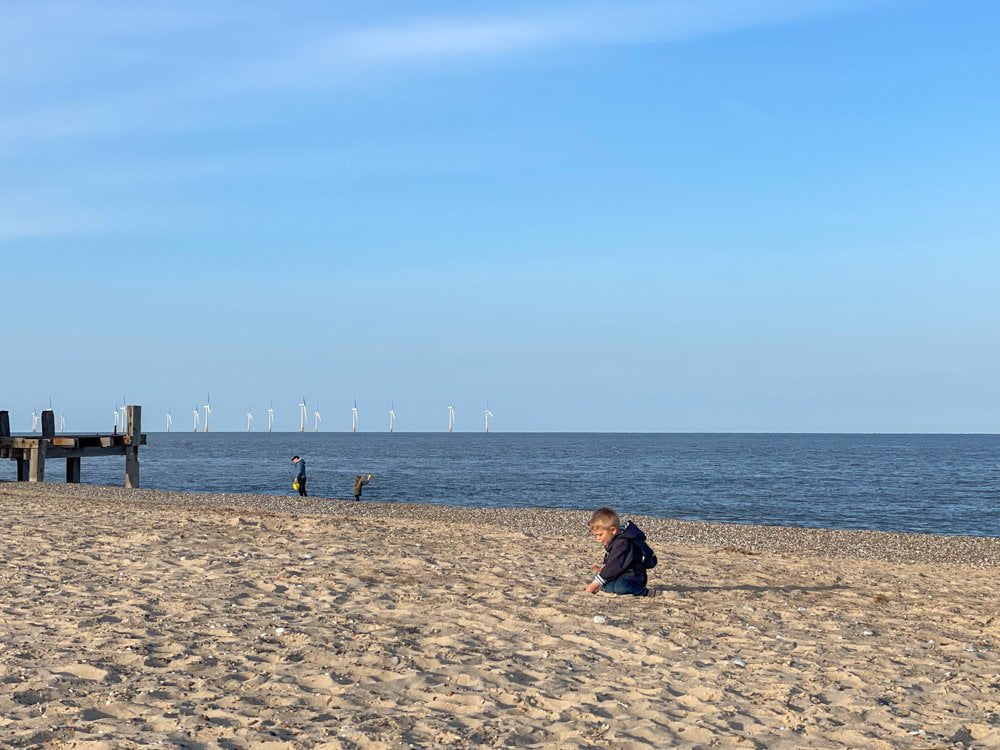
Why Great Yarmouth Was the Coolest Victorian Seaside Destination
As an Italian born and bred, the first time I saw Great Yarmouth I was astonished by its flashy appearance and the arcades right next to family attractions. This is something that would be unthinkable, and even illegal, in much of continental Europe. Yet behind the neon lights, I found something unexpectedly fascinating: the nostalgic charm of a traditional British seaside holiday and echoes of the town’s old Victorian grandeur.
In 1890, the Daily Telegraph described Great Yarmouth in grand terms:
At Yarmouth they do not sit on the sands, they burrow in them; they make caves and holes and habitations for men, women and children.
At Yarmouth they are not content with one pier; they have three, with music, dancing and comic songs from morning until night.
A portion of these glorious sands is reserved for another alfresco concert and at periodic intervals throughout the day harmony prevails to the extreme delight of the lovers of comic and sentimental songs. There never were such sands or such songs as are heard on holiday time down at Yarmouth.
Following this article, it’s clear that Victorian Great Yarmouth raised the standard for seaside resorts, taking its entertainment business quite seriously.
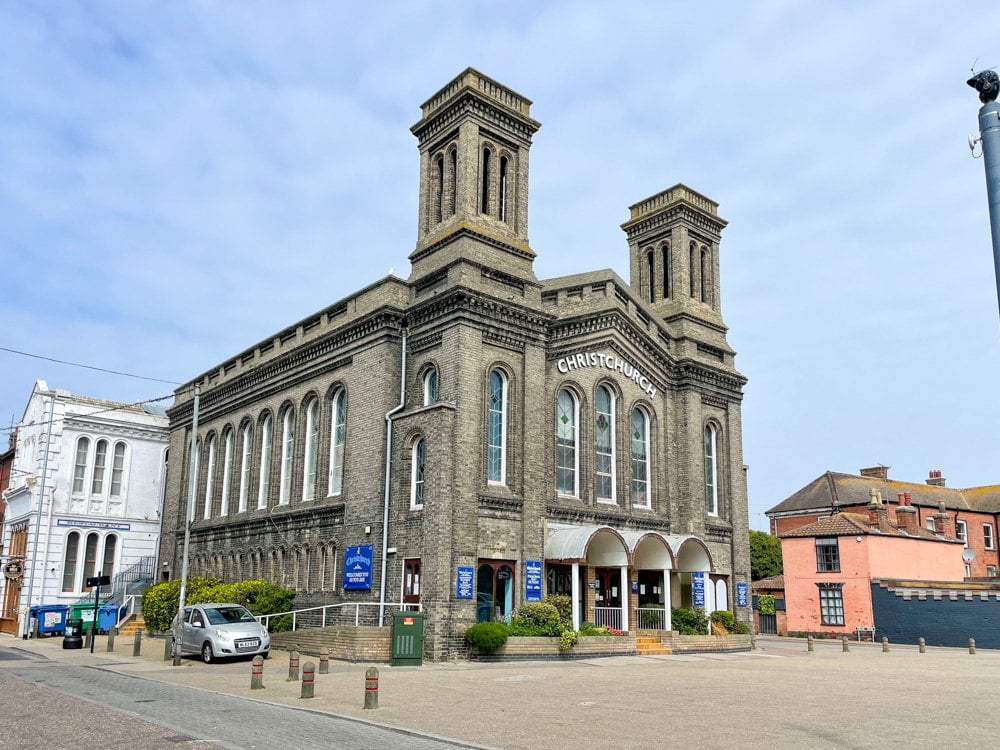
Timeline of Great Yarmouth’s Waterfront: From Victorian Elegance to Seaside Fun
Just a decade later, in 1903 and 1904, Great Yarmouth’s seafront saw the opening of two iconic landmarks: the Hippodrome Circus and the Winter Gardens.
The Hippodrome Circus, still active today, is Britain’s only surviving permanent circus building. Although new constructions have since obscured its original location by the seafront, its elegant Art Nouveau facade remains a true architectural gem.
The Winter Gardens had an even more curious journey. They were dismantled in Torquay and transported all the way to Great Yarmouth, where they were completely rebuilt. This ambitious move gives you a sense of how determined the town was to become a fashionable seaside destination.
In 1922, the Great Yarmouth Lido opened its gates. It was a grand open-air swimming pool filled with unheated saltwater, used for both performances and sporting events. Then, in 1937 came the Marina Theatre, further cementing the town’s reputation for refined seaside entertainment.
Everything changed after the Second World War. The introduction of paid annual leave meant that, for the first time, working-class families could afford to go on holiday.
The elegant theatres and musical performances gradually gave way to campsites and caravan parks. This shift marked the beginning of a new kind of holiday: affordable, family-friendly, and unmistakably British.
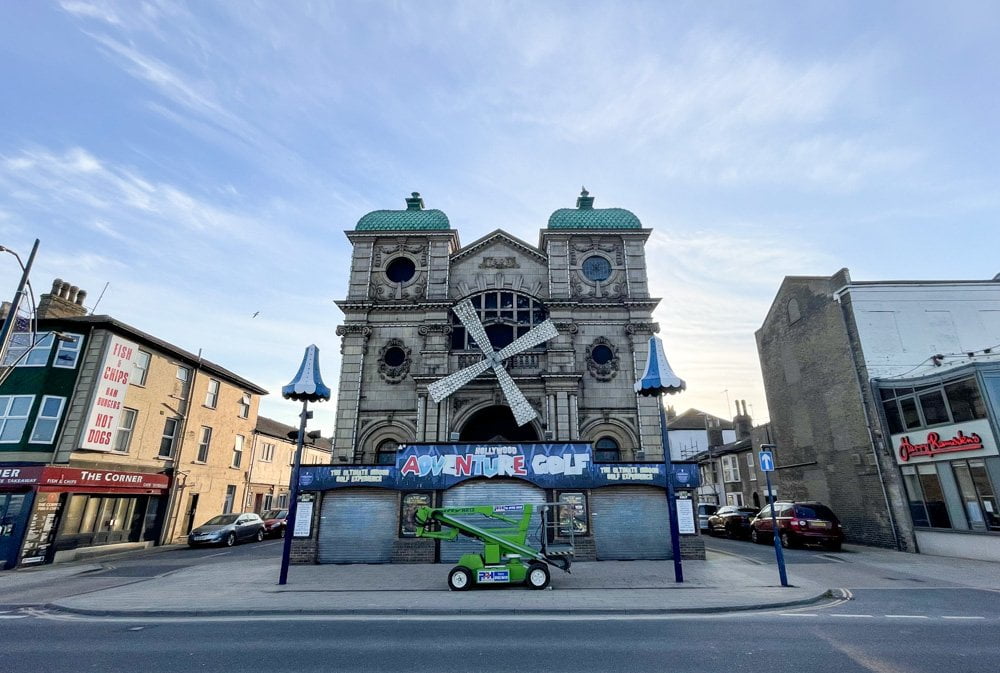
What Remains of Great Yarmouth’s Historic Charm Behind the Neon Lights
By now, you’re probably wondering what’s left of Great Yarmouth’s once lavish past. It’s still there, hidden behind the flashing lights of the waterfront arcades. Looking closely, you’ll spot elegant historic buildings along the seafront, often peeking out behind the brightest neon signs and amusement rides.
But don’t expect the kind of polished Victorian charm you’d find in Brighton or Blackpool. Great Yarmouth doesn’t trade on nostalgia or genteel seaside glamour. It’s unapologetically down-to-earth, a no-frills, proudly flashy holiday destination where the atmosphere is loud, cheerful, and 100% British.
Gone are the posh hotels, refined restaurants and grand theatres of the past. In their place, you’ll find candyfloss stands, fish and chips, mini-golf, and rows of penny arcades that have earned the town its nickname: the Las Vegas of East Anglia.
And yet, British families love it here. Whether it’s the thrill of arcade games, a walk on the wide sandy beach, or a bag of chips in the sea breeze, there’s something wonderfully nostalgic and comforting about a holiday in Great Yarmouth. It may not be classy, but it’s definitely classic.
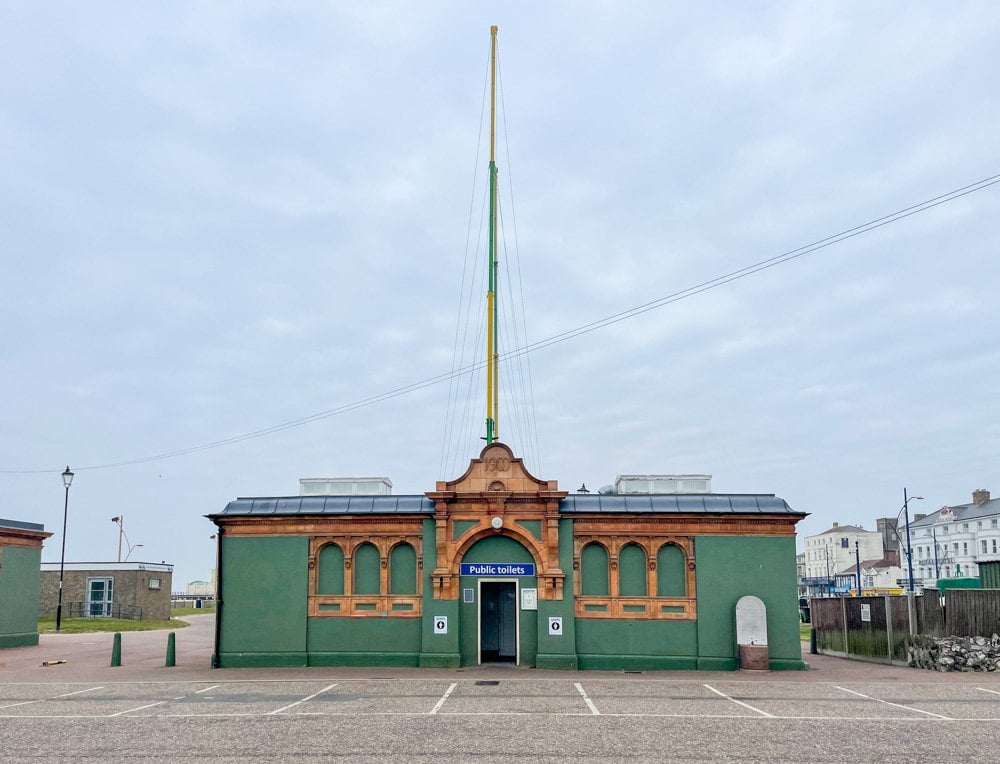
Historic Landmarks to Explore on Great Yarmouth’s Waterfront
Great Yarmouth’s waterfront features many Victorian buildings and old seafront hotels, often overlooked but rich in character and history. Two historic landmarks stand out: Britannia Pier and the Hippodrome Circus. They are still operating today, and visitors are welcome to stroll into these historic venues.
Britannia Pier: A Classic Seaside Icon in Great Yarmouth
The best-known building in Great Yarmouth is Britannia Pier, with its silhouette stretching toward the sea. When you think of Great Yarmouth, images of Britannia Pier often come to mind, along with 99-cent ice cream and fish and chips on the beach.
However, the history of Britannia Pier has been quite troubled. It originally opened in 1853, but just one year later, a ship cut it in two during a storm. Remarkably, the same incident occurred again in 1868.
As if that weren’t enough, the pavilion built on the pier in 1901 was destroyed by fire and rebuilt over five times in the following 57 years. Fortunately, the current pavilion, inaugurated in 1958, appears to have avoided further misfortune and has endured over the years.
The Britannia Pier Today
Today, along the pier, you’ll find classic fairground rides next to bustling arcades filled with coin-operated games and slot machines. If you aren’t British, you might be surprised to see slot machines so close to the children’s rides, but this reflects the essence of the traditional working-class British holiday.
The theatre inside Britannia Pier hosts regular shows throughout the year. Three bars also provide a perfect spot to relax with a drink or a snack while enjoying panoramic sea views. So, if you’re looking for an authentic British holiday experience, nostalgic seaside entertainment, or simply a place to soak up the atmosphere, Britannia Pier has it all.
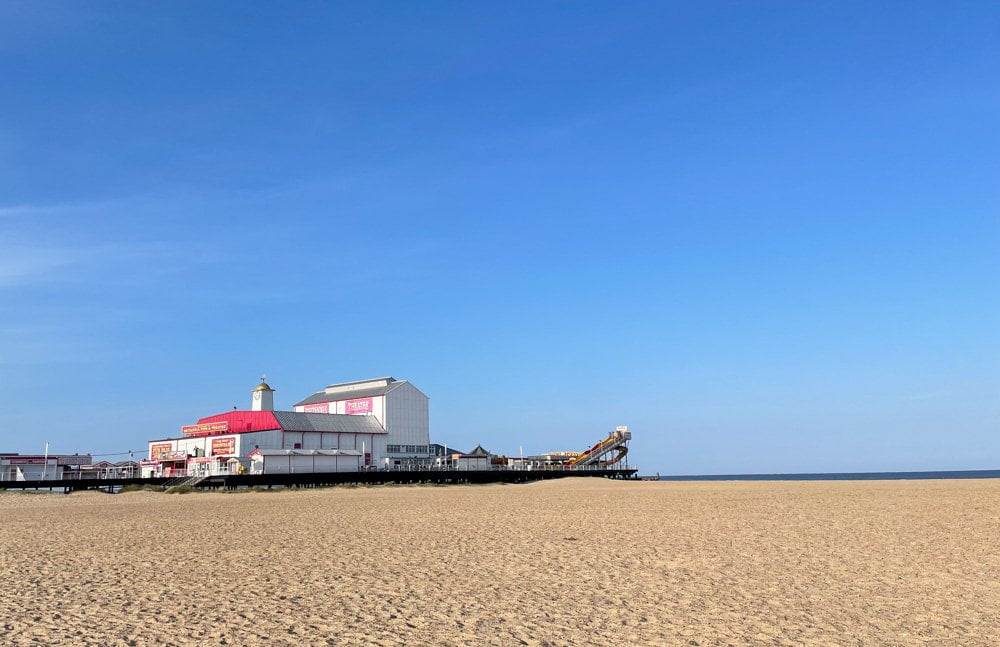
The Hippodrome Circus: Britain’s Oldest Surviving Circus Theatre
The Hippodrome Circus, built in 1903 for showman George Gilbert, is the only remaining building in Britain that hosts a permanent circus. Although it once had a view of the Marine Parade waterfront, it is no longer directly visible from the beach today.
Despite its distance from the waterfront, the beauty of the Hippodrome Circus facade remains striking. Designed in the Art Nouveau style by Ralph Scott Cockrill, one of the architects who contributed to Great Yarmouth’s urban planning, the building features terracotta sculptures depicting partridges in a pear tree, peacocks with open tails, and owls with outspread wings.
A unique aspect of Great Yarmouth’s Hippodrome Circus is its stage, which can sink to transform into a swimming pool for water shows. This mechanical feature, restored in 1981 by owner Peter Jay, is quite rare among permanent circuses worldwide. This makes seeing a live show at the Hippodrome even more special!
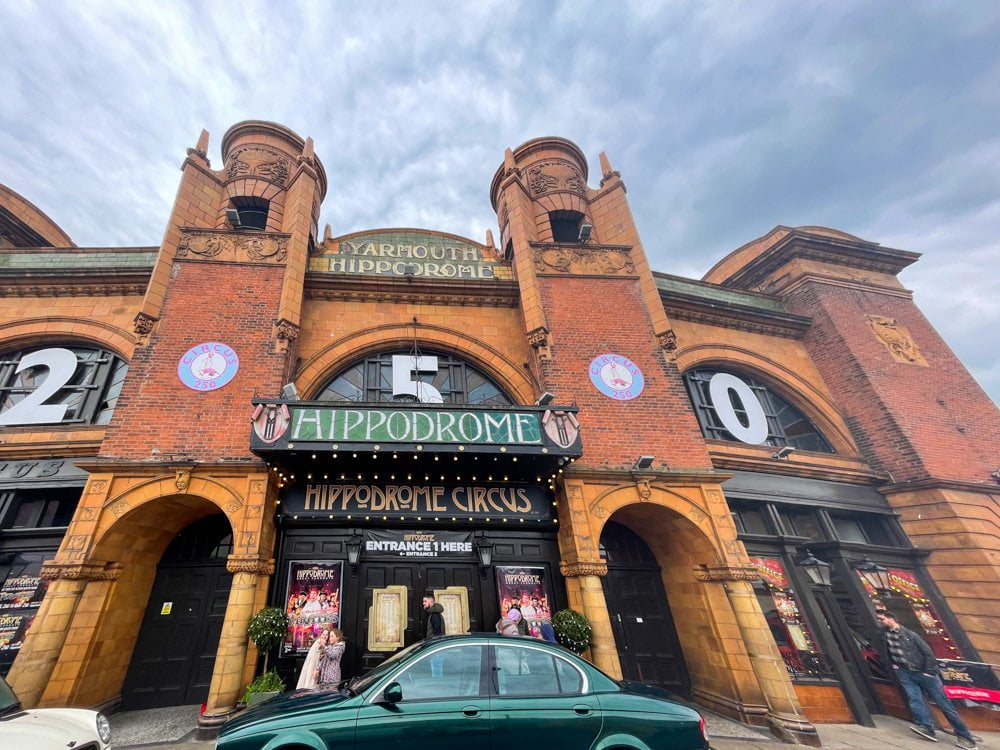
Lost Attractions of Great Yarmouth’s Seafront
However, not all of Great Yarmouth’s waterfront attractions, such as Britannia Pier and Hippodrome Circus, have survived the city’s transformation through the years. Some have simply gone by, while others have been demolished after people had lost interest, such as Great Yarmouth Lido.
Revolving Tower: Great Yarmouth’s Spinning Seaside Viewpoint
The Revolving Tower was a panoramic elevator, built in 1897. It could rotate on itself, offering a view of the coast and the city. Thanks to a cage that rose up to 140 feet, it offered a view of the city.
After WWI, the revolving mechanism stopped working, it became an observation tower. Indeed, the tower was finally demolished in 1941 to provide metal for the WWII war effort.
Chapelle’s Ring: The Forgotten Fairground Ride of Great Yarmouth
The Chapelle’s Ring, named after its owner, James Chapelle, was a circular stage, enclosed by a wooden fence and decorated with plants and gas lamps. People paid to enter the Ring and listen to the acting of Great Yarmouth actors. This attraction was so popular that people were listening from outside to save money!
Marina Theatre: Great Yarmouth’s Historic Stage by the Sea
The Marina Theatre was an elliptical auditorium located between Britannia Pier and Wellington Pier. Inaugurated in 1937, it had a capacity of up to 3,000 people. During its heyday, it hosted many seasonal shows, competitions, and celebrity performances.
Like other attractions in Great Yarmouth, the Marina Theatre’s history is marked by successes and challenges. During World War II, it was requisitioned by the army, similar to many other large seaside properties.
By the late 1950s, the Marina Theatre had become the main attraction in Great Yarmouth, coinciding with the city’s peak popularity as a seaside resort. However, in 1968, the theatre became unprofitable and ultimately closed its doors.
Great Yarmouth Lido: A Lost Gem of British Seaside Leisure
One of Great Yarmouth’s great attractions was the Lido, an outdoor swimming pool filled with unheated salt water that opened in 1922. On the inauguration day, despite the rain, 2,000 spectators attended speed swimming and lifesaving competitions.
The Lido pool was so popular that it was refurbished in 1961. Children used to take swimming lessons there. However, since it was outdoors and had unheated water, in the following years, it was used less and less on cold and windy days. The pool was eventually demolished in 1979 to make room for the Marina Centre, a tropical lagoon with warm waves and many sports courts.
Today, instead of the old Lido, and the old Marina Centre, there is a new Marina Centre. It features a swimming pool, water games, inflatables, a gym, a climbing wall, indoor sports fields, and even a cafeteria.
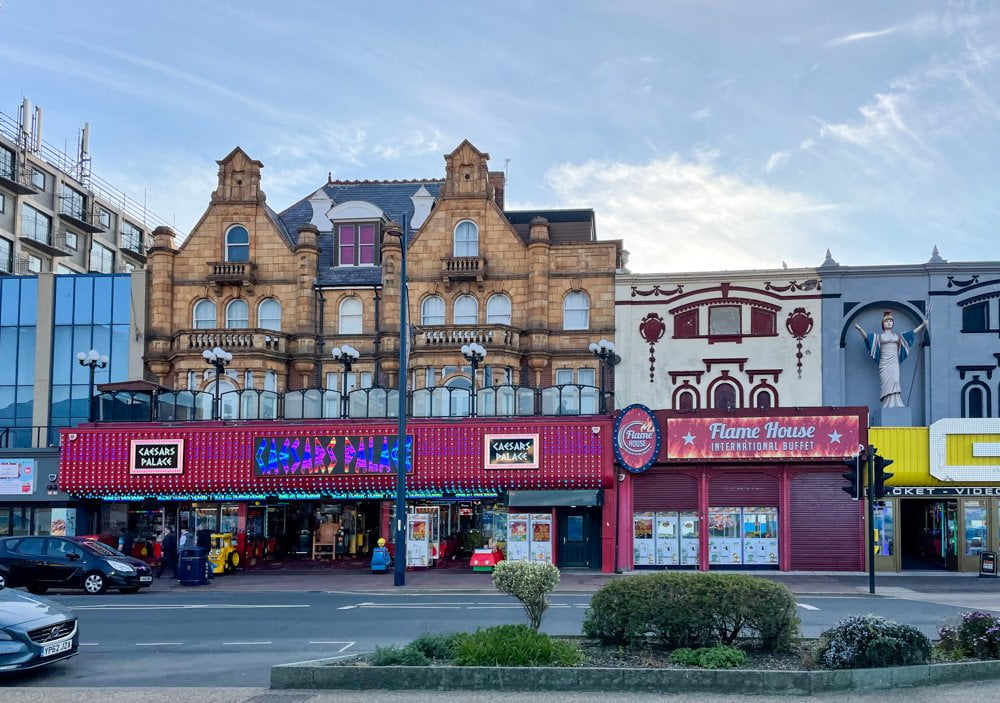
Where to stay in Great Yarmouth
In Great Yarmouth, you can choose to stay in one of the charming waterfront hotels, many of which date back to the town’s Victorian seaside heyday. My favourites include the elegant Ocean Hotel, which offers the added convenience of free parking, and the cosy, family-run B&B The Weatherdene, where I felt right at home when I stayed with my son.
I know perfectly well how flashy Great Yarmouth is today, but its true charm lies in the striking contrast between old and new. The elegant Victorian glories still stand side by side with the bright neon lights of the arcades. Great Yarmouth is both the sparkling “Las Vegas of East Anglia” and home to the historic wooden Hippodrome Theatre. Here, you can experience a classic British holiday full of history and fun. Feel free to leave a comment and share your own Great Yarmouth memories!
